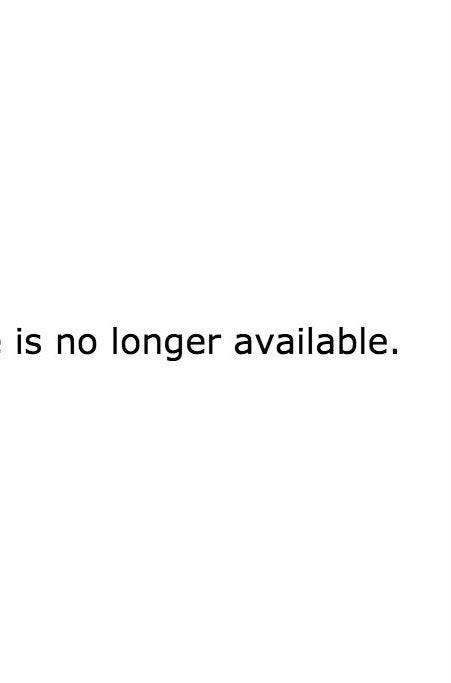


Anyone who’s gone through it knows that you never come out just once. There are the bigger moments — coming out to your parents, maybe, or to best friends or classmates or co-workers — but there are the quotidian ones, too. A lesbian lets her gynecologist know why she doesn’t need any birth control right now, thanks but no thanks. A bisexual man, swallowing his horror, tells a presumptive waiter that the guy he’s sharing some fried calamari with is his boyfriend, not his brother. A nonbinary pansexual person dating a cisgender guy explains a million times over that even if their relationship looks straight from the outside, they’re actually super fucking queer.
Just as often as LGBT people slog through these little everyday coming-outs, however, many choose certain moments to remain quietly, but assuredly, in. We decide to let our landlords assume our partners are just roommates. We don’t disclose our gender identity or our sexual orientation at a bar when being heckled by an aggressive drunk. We let grandmothers and bosses and pastors assume we’re something we are not, out of love or a simple desire to keep the peace, or to assure our safety.
Coming out is LGBT 101 at this point. There couldn’t be a more boring question than “When did you come out?” or “When did you know?” — yet queer people are asked both constantly. These questions are, of course, dumb and reductive, because no one could possibly offer a single clear-cut answer: Out versus In is not a binary, but a lifelong series of strange and shifting negotiations.
Though Ellen’s “Yep, I’m gay” cover may always be the coming-out of all coming-outs, an enormous and explicit public declaration has never been the extent of the practice for celebs or us normals. The supposed closets in which many of us crouched as children (and beyond) are not fixed and finite, nor or they identical for everyone. For some — butch dykes, gender-nonconforming femmes — the closet was never really there at all. It’s an overused and radically unhelpful metaphor. And yet Coming Out still remains broadly defined in the way it was for Ellen, and long before her: as a status, spoken. As a before and after. Charlie Carver, the Teen Wolf actor who publicly came out last week on Instagram, summed it up in a tweet: “I am one of a community that has to announce itself to be known.” But now – as more people are embracing the concept of sexual fluidity, some even refusing to label their orientations at all — is that announcement really still necessary?

In a heteronormative world full of people who assume that everyone is straight and cisgender unless a bomb of queer signifiers blows up in their face, public declarations remain the only surefire way to convey queerness to a vast number of people. Carver has been one of a number of young stars to publicly announce their sexual orientation on social media in the last few weeks. His message was spread over five Instagram posts of the same image: a sign reading “Be who you needed when you were younger.” Two weeks ago, the brilliant 17-year-old actor Amandla Stenberg took over Teen Vogue’s Snapchat to advocate for a world in which everyone sees themselves reflected in the media, sharing that she identifies "as a black, bisexual woman." Colton Haynes, an actor on Arrow (as well as Teen Wolf, alongside Charlie Carver), wrote an extremely ambiguous response on his Tumblr to a post referencing his “secret gay past.” “Was it a secret?” he wrote. “Let’s all just enjoy life & have no regrets :)” It definitely wasn’t a coming-out, but it wasn’t quite a denial, either.
While splashy cover stories used to be a popular option for famous gays ready to take the coming-out plunge — from Ellen’s Time cover in 1997 to Lance Bass’s People cover in 2006 — messages spread through a celebrity’s own social media platforms demonstrate the growing irrelevance of major media when it comes to celebs’ personal announcements, a trend John Herrman thoroughly documented in The Awl last month. While old-school coming-outs still do happen — Olympic skier Gus Kenworthy revealed that he identifies as gay in ESPN The Magazine last October, and Caitlyn Jenner’s highly contentious Vanity Fair cover will likely go down in history as the most famous iteration of the genre — covers look stodgy and conventional when celebs can now reach teens without the filters of publishers and PR people between them. Snapchat feels friendly and intimate; a magazine cover is a publicity statement.

But among celebrities announcing their queerness, whether ostentatiously in Big Media or through chiller routes like tweets or ’grams, there are plenty who eschew official admissions altogether. On the Death, Sex & Money podcast last December, actor Holland Taylor told host Anna Sale: “I haven’t come out because I am out. I live out.” The concurrent news that she’s dating fellow actor Sarah Paulson boggled the minds of many, even though both women had been publicly affectionate IRL and on social media for months. Taylor’s not-coming-out recalled Jodi Foster’s famously confusing speech at the 2013 Golden Globes, as well as Kristen Stewart’s August cover story in Nylon, throughout which the interviewer was clearly fishing for some sort of sexuality pronouncement. “I don’t feel like it would be true for me to be like, ‘I’m coming out!’” Stewart said, as well as: “Google me. I’m not hiding.”
And she wasn’t. At least by then. All summer, Stewart was constantly photographed by the paparazzi holding hands with her live-in girlfriend at the time, Alicia Cargile. But, as my very smart colleague Kate Aurthur wrote in an essay last June, “when [Stewart] started dating a woman, it was as if she had suddenly become invisible.” All photographic evidence of intimacy to the contrary, Stewart and Cargile were labeled “gal pals” and “BFFs” by the same tabloids that had put the minutiae of her dating life with men on blast. Stewart was, as always, incredibly visible in the media — much more so than she would like — but her rather overt queerness went unnoticed.
Queer women, in particular, are constantly assumed to be straight, with their romantic relationships belittled as friendships or phases or performances for horny heterosexual men. While Stewart’s queer cred has been glaringly obvious to lesbians everywhere for years, there are still plenty of clueless straight people out there who — not knowing where to look or even to look — still think of Stewart as the ex-girlfriend of Robert Pattinson and that English film director. Which is not Stewart’s fault, or her responsibility. The onus shouldn’t be on queer people to declare their otherness over and over.
Still, in her Nylon interview, Stewart went further than just refusing to come out on someone else’s terms. “If you feel like you really want to define yourself, and you have the ability to articulate those parameters and that in itself defines you, then do it,” she said, adding: “Until I decide that I’m starting a foundation or that I have some perspective or opinion that other people should be receiving…I don’t. I’m just a kid making movies.”
It was a rather strange implication — that, for her, to come out would mean she was taking up the mantle of queer activism, potentially lumped in with the likes of Ellen Page, whose own coming-out speech in 2014 at an HRC event was undeniably inspired by a social consciousness. Stewart also seemed to think that, were she to give herself a label, it would supersede the one label she does care about (“I am an actress, man”). It’s a fair worry: The further anyone is from being a straight white cisgender man, the more they face pigeonholing in their careers. But those who can avoid self-identifying with a marginalized label by blending in with the majority do hold a particular privilege over those who can’t — particularly trans women of color, who, in their hyper-visibility, are targets for epidemic levels of violence.
Stewart’s comments share a certain kind of derision with Cate Blanchett’s at the Cannes Film Festival last May. A Variety cover story quoted Blanchett as having been in past relationships with women “many times,” but Blanchett later claimed the reporter had taken her words out of context. “Sexuality is a private affair,” she told Cannes reporters. “What happens these days is if you are homosexual, you have to talk about it constantly; it has to be the only thing; you have to put it before your work, before any other aspect of your personality.” (Stephanie Fairyington shut down this rather ridiculous presumption in Slate: “What Blanchett experiences as homosexuality's loud self-assertion is a faint whisper next to the roar of heterosexuality.”) And then there was Matt Damon giving some acting advice in The Guardian last September. “Whether you’re straight or gay, people shouldn’t know anything about your sexuality because that’s one of the mysteries that you should be able to play,” he said — a curious instruction, since he personally makes no effort to deny the fact that he’s married to a woman. Damon, Blanchett, and Stewart can’t seem to conceive of a world wherein someone can own up to being gay without their gayness taking over every aspect of their personhood and professionalism — or at least, without the media assuming as much.



After the Nylon interview, Stewart was championed as someone who refuses to publicly label herself. Denouncing labels when it comes to sexual orientation is au courant, for what is probably a conflation of many reasons. The average coming-out age has been radically dropping, and many young people are taking the much-needed time to figure themselves out and explore before closing in on a name for their sexuality, should they ever. Back in August, when 16-year-old Lily-Rose Depp posed for the Self Evident Truths Project, a portrait series of thousands of Americans who identify as “not 100% straight,” the headlines declared she’d come out as such. Last week, Girl Meets World actor Rowan Blanchard tweeted that she’s also joined the No Labels camp, saying that even though she has “only ever liked boys,” she doesn’t want to identify “as straight gay or whateva,” nor does she want to give herself “labels to stick with.” The 14-year-old is interested in “just existing.”
For the young and questioning, No Labels/Anything but Straight offers a hallowed space for self-discovery in those very confusing early years of sex and dating. But many believe — even hope — that this trend is much bigger than young people finding themselves. An increasingly popular hypothesis about fluidity and queerness predicts that we’re all hurtling toward a future of sexual fluidity, when all labels will be collapsed into meaninglessness. One such study propagating this theory, out of the University of Essex last November, claimed that “women are either bisexual or gay, but “never straight.” (It was widely criticized; one of the best shakedowns came from Anna Pulley in The Cut, who points out that just because women are biologically turned on by stimuli doesn’t mean their brains are always on the same page.)
Another poll, conducted by YouGov in August 2015, used the six-point Kinsey scale to determine that 1 in 3 Americans between the ages of 18 and 29 “plot themselves as something other than exclusively heterosexual.” Of that same American demographic group, however, 84% identify as heterosexual — which means that, presumably, of the 31% who didn’t plot themselves as completely straight, roughly half identify as straight regardless.

Rather than repressing queer feelings, it seems as though many young people are opening themselves up to at least the possibility of queer experience. All the more fascinating, then, is that while young people are more open to different kinds of attraction than ever, many who fall somewhere in the middle of the Kinsey scale still call themselves heterosexual — which is, of course, a label, like any other. So are “not 100% heterosexual” and “not 100% straight” — labels which, even as they try to distance themselves from heterosexuality, manage to center it.
A never say never attitude — even for “straight” people, especially for “straight” people — when it comes to sexuality is undoubtedly a healthy one, particularly because the boundaries of gender are beginning to gloriously crumble around us. Those atrocious videos of lesbians touching penises for the first time, or gay men who try kissing straight women, assume an extremely narrow breadth of not only queer, but human experience — there are, in fact, lesbians with penises, just as there are gay men with vaginas. Our labels, as much as we try to hold fast to them, are beginning to strain at the seams, and we’re being forced to interrogate what our queerness means to us. So much the better. In Maggie Nelson’s quietly explosive book, The Argonauts, she grapples with whether or not language can keep up with the way we fuck, the way we live. “There are no longer binary machines: question-answer, masculine-feminine, man-animal, etc.,” she writes. “This could be what a conversation is — simply the outline of a becoming.”
The call for sexual fluidity’s revolution does sound like an exciting conversation, particularly on the level of individual personal agency — why the hell not open yourself up to possibilities you might have once thought closed off to you? — but as a social trend, or even as a social prescription, the conversation leads to dead ends.
When Rowan Blanchard tweeted that she didn’t want to label herself, many fans tweeted back with confusion. “Open to liking any gender in [the] future is why I identify as queer,” she clarified in a follow-up tweet, seemingly reneging on her pact to stay label-less. “But have you actually been attracted to more than one gender :/ being open to it is not the same,” another fan tweeted back to her. A 14-year-old girl should by no means feel compelled to predict her whole romantic future — and policing other people’s conceptions of their own queerness is, of course, a zero-sum game — but questioning attraction versus openness draws an interesting distinction nonetheless.
In terms of the bigger picture, it’s easy enough for the more cynical among us to feel as though culturally equating a hint of queer possibility with attraction and action could lead to people of any age co-opting queerness for its current cool factor. In 2016, renouncing labels is often hailed as forward-minded and cosmopolitan — an admirable way to exist above the fray of identity politics — whereas, for example, bisexuals and pansexuals who unabashedly label their interest in more than one gender are still stereotyped as greedy, slutty, and indecisive. Encouraging people to explore their sexualities without feeling confined to a label is all well and good (even if it means that a few will end up dubiously claiming queerness along the way), but supporting a future in which we all eschew labels altogether in the name of fluidity is not only futile, but potentially damaging to everyone who has finally felt at home in an identity discovered and claimed. Human sexuality is a big, messy, extraordinary thing, and as our conception of gender identity grows, it’s only going to get messier — but invoking the spectrum to indicate that Come on, man, everybody’s just a little fluid, bro, doesn’t do most queers any favors.
“What does it matter who you sleep with?” anonymous posters complain in the comments section of yet another coming-out story. “Why is anyone’s sexuality even a big deal anymore? Can’t we all just be people?” Cate Blanchett put it this way, back when she was shutting down the lesbian rumor mill: “In 2015, the point should be: who cares?”
It’s a delicious proposition. If we don’t label ourselves, perhaps we won’t be othered and oppressed at long last. But a better question might be (updated for the new year): In 2016, why do we still care? Why do interviewers keep fishing for celebs to out themselves? Why, when famous people we admire give themselves a label and share it with the world, do the news stories written about them still go viral?
Maybe because heteronormativity is still such a looming presence that anyone who rejects it — even in the simplest, most banal way of public self-identification — is doing something that’s still rather rare (LGBT people remain, after all, a minority). Maybe because there are plenty of people in this world for whom more coming-outs is a danger and a threat. Maybe because anyone who identifies as heterosexual can be opened up to the world of queer possibility when identities like bisexuality are asserted and validated. Maybe because young and questioning kids want to believe they can grow up to be movie stars or titans of industry without having to painstakingly avoid being seen around or even mentioning their significant others, lest they be criticized for shoving their queerness down everyone’s throats — or worse, harassed or fired from their jobs.
On Twitter, Teen Wolf’s Charlie Carver said that his sexuality “was not a secret to many, but I felt it necessary to share (until coming out is a thing of the past).” That’s the dream: when famous coming-outs will no longer be news; when all queers can roam the world openly without having to explain themselves over and over, without having their right to health and happiness violated once they do. But insinuating that people should simply stop doing it, or no longer need to — whether on a magazine cover, in a speech, on social media; to one person, to a million — is not quite the answer. If anything, the more people who claim queerness, the more normalized it will become and the less fanfare it will inspire. That isn’t to say, though, that queer people should have to keep explaining themselves ad nauseum — especially because it isn't always safe. Perhaps there is a happy medium to be reached someday, where casually alluding to one’s own gender identity or sexuality is no big deal, while we simultaneously stop assuming that everyone is straight and cisgender unless they explicitly tell us otherwise. Mentioning a partner of the same gender should be as normal as asking someone for their preferred pronouns. And why not encourage straight and cisgender people to both announce and interrogate their own labels for a change? If LGBT people are still pressed to come out — particularly trans and gender-nonconforming people, who, when disclosing their identities, risk being vigorously policed, shamed, doubted, and met with unspeakable violence — then, until straight/cis is no longer the assumed default, so should we all.
“How can the words not be good enough?” Nelson writes in The Argonauts. Our words: trans, genderqueer, bisexual, lesbian, gay, pansexual, intersex, nonbinary, asexual, on and on and on, a train of labels which can feel restrictive and limiting one moment and like salvation, like home, the next. They are flawed, powerful, and ever-evolving words. They are words soaked with the blood and sweat of generations of people who fought, no matter the costs, for our right to claim them. Queer, dyke, fag: words used to assault and humiliate, which we can wear, if we so choose, as a big old "fuck you" to everyone who once weaponized them against us. Are the words enough? Alone, they aren’t. Not even close. But that doesn't mean we shouldn't keep shouting them.
